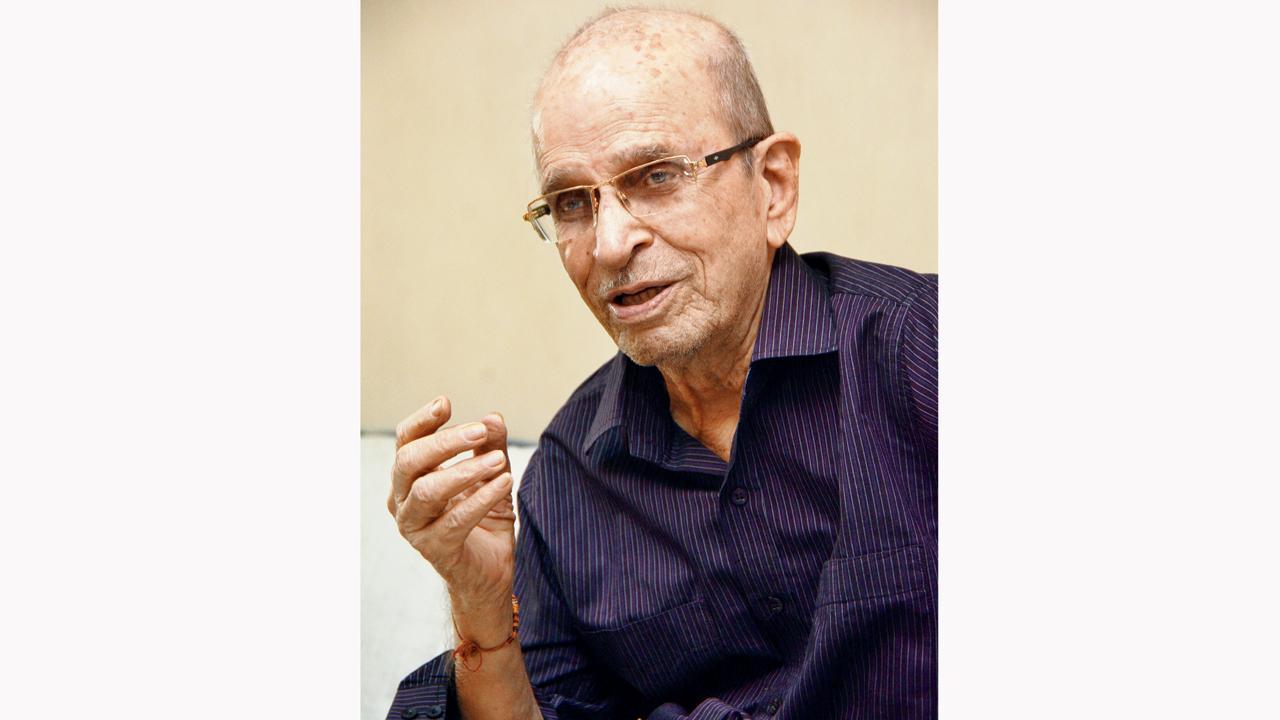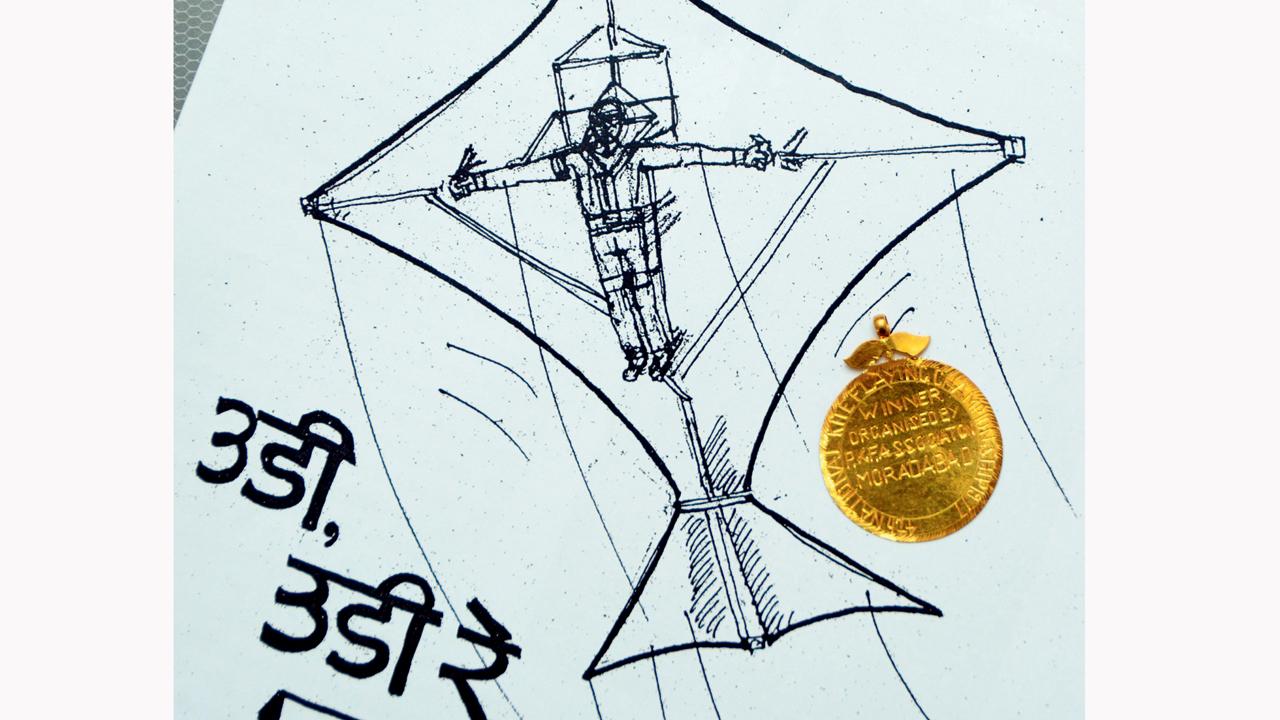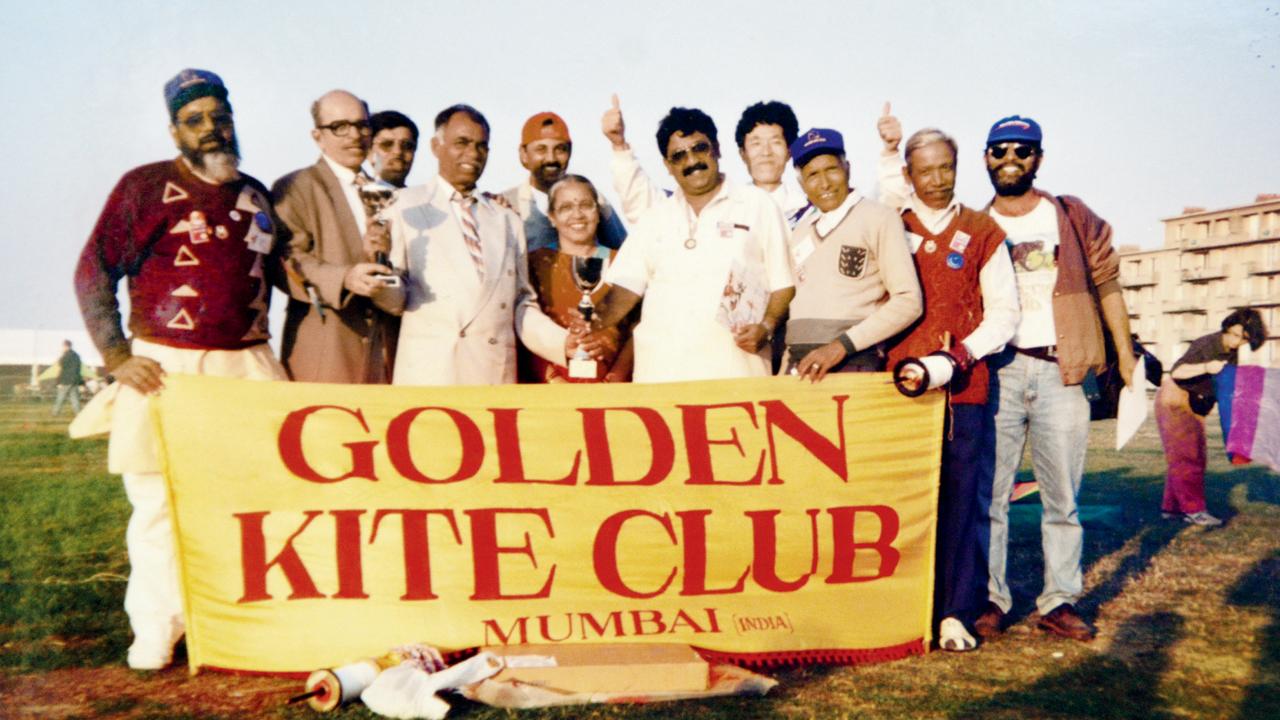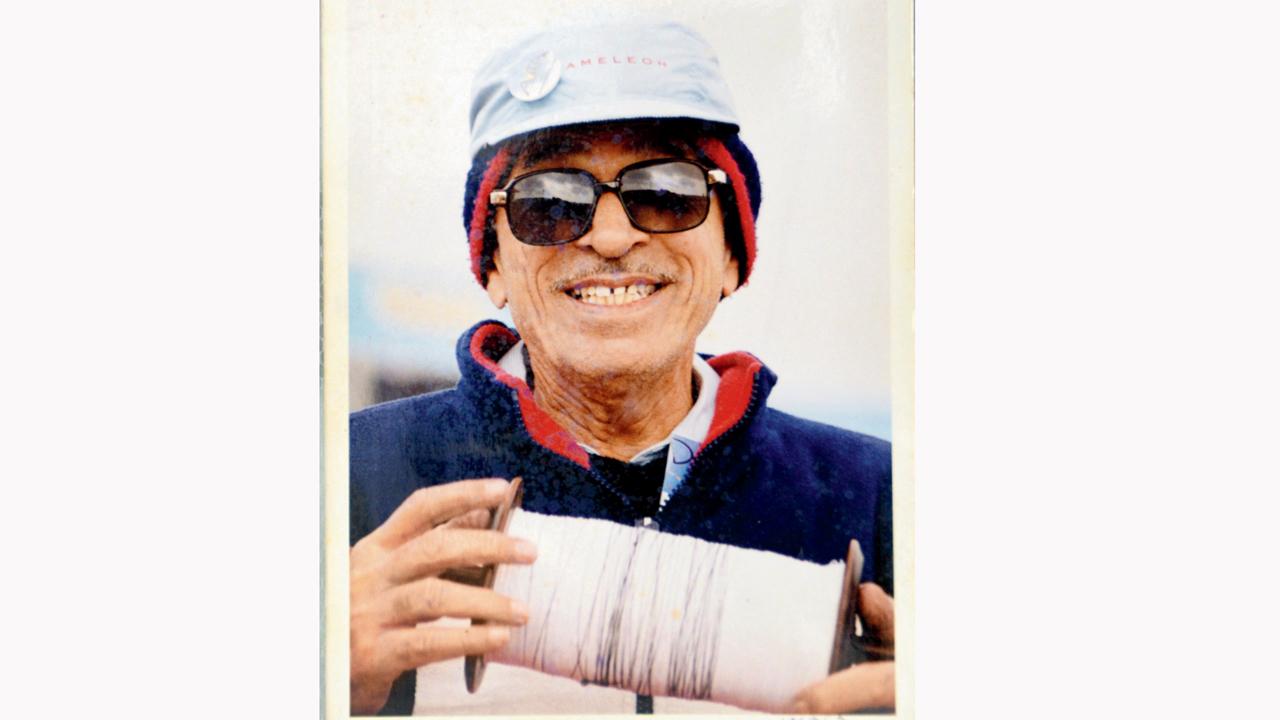Ahead of Makar Sankranti, 90-year-old famed patang baaz Dilip Kapadia jogs his memory to recount the laurels earned while flying kites from Mumbai to Normandy

You have to be sharp, quick on your feet, brutal in attack. There is no time for self-doubt. You have 15 minutes to touch the heavens. Pics/Satej Shinde
As a teenager in the 1920s, Dilip Kapadia spent long hours indulging in his first love of flying kites. This was at Girgaum’s Chowpatty beach before the 2014 ban on patang baazi and manja wars kicked in. His first brush with the hobby was when he was just four. “I lived at Sikka Nagar near Prarthana Samaj; we moved here when I was six,” Kapadia says, seated in his apartment in a three-story heritage building at Babulnath with a wooden exterior painted brown and yellow.
ADVERTISEMENT
During one of his flying sessions at Chowpatty, a bystander named Peer Mohammad Ali Mohammad, suggested that he participate in an upcoming competition in Jaipur. “I was 17. Peerubhai eventually became my guru; he taught me how to choose the right kite, understand the shape of the wooden bow that runs horizontally across it, how much pressure to apply while bending the kite from either side to feel its strength, and finally how manja should feel between your fingers.”

Dubbed as the King of Kites in his youth, Kapadia considers himself a passionate lover of kite fighting who was lucky enough to receive love in return. A reluctant king refusing his crown, Kapadia says he and Peerubhai would practise for competitions starting Diwali until Makar Sankranti. The ‘addicts’ among them would fly kites even in the monsoon, “during dry spells between showers and crackling lightning”.
To earn a living, Kapadia moved away from his family’s retail cloth business and ventured into rental taxis. But in his down time, he’d run up to a terrace with his sights set on the sky.
 Kapadia’s career gained popularity due to his kite cutting panache that took him far and wide and put Mumbai’s kite culture on the map
Kapadia’s career gained popularity due to his kite cutting panache that took him far and wide and put Mumbai’s kite culture on the map
This eventually led him to be part of the team that won the first runner up cup at the World Cup Of Fighter Kite 1996 in France. The location was Dieppe beach off the coast of Normandy. This was a first for an Indian kite fighting club. The many competitions he had sharpened his skills at across India led him to form the Golden Kite Club in 1977. Just four years after the team’s formation, it bagged the first prize at the All India Kite Cutting Competition in Moradabad. “It couldn’t have happened without our captain, Sahezade Abbas,” Kapadia says in true sportsmanship spirit.
The club went on to win across India, including his favourite, The International Kite Festival, Ahmedabad. These victories cemented Mumbai’s reputation as home and mentor to one of the most aggressive and strategic kite cutters. Until then, kite flying was dominated by players from Uttar Pradesh and Bihar.

Kapadia lifts himself off the sofa with a leather cane, and excuses himself for a minute. He returns with the Moradabad medal. He doesn’t trust anyone else to dig it out of its safekeeping. “It’s 27 grams,” he says, his eyes gleaming as he opens a velvet box. The gold is sealed in a plastic zip lock. “I recently got it appraised; they say it’s worth Rs 27,000 today. For me, of course, it’s priceless.”
The joy is short lived, though. The smile disappears from his face when we ask about the hobby’s future. “Skyscrapers and mobile screen addiction have killed kite flying. Earlier, we would fly kites from our terraces. The buildings in the neighbourhood were around the same height. Today, we don’t have enough free sky to let the patang loose. And kids are buried in their mobiles. It’s only kids whose family have seen the kite flying tradition who take it forward. There are no new ‘converts’.”
As he sips his tea, we ask Kapadia when was the last time he held a manja between his fingers. It was 2020. A patang fight needs a player to stand for 15 minutes straight. “You have to be sharp, quick on your feet, brutal in attack. There is no time for self-doubt. You have 15 minutes to touch the heavens.”
 Subscribe today by clicking the link and stay updated with the latest news!" Click here!
Subscribe today by clicking the link and stay updated with the latest news!" Click here!







